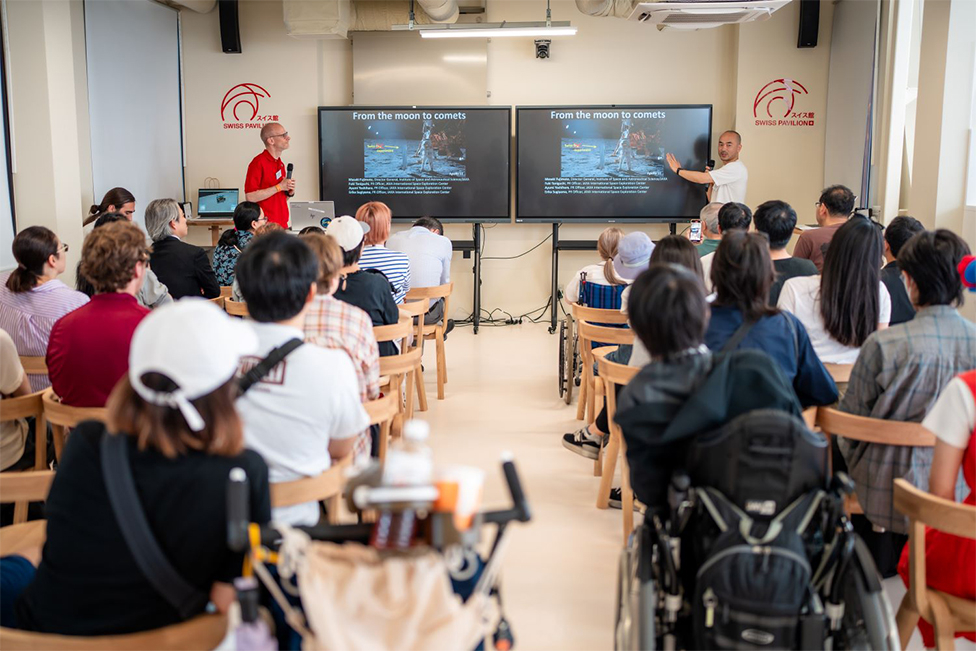With the early summer breeze, let's take a take a step into space!
The first weekend in June was marked with clear blue skies before the rainy season begins.
At the Swiss Pavilion in the 2025 World Expo in Osaka, the University of Bern and JAXA hosted a special event titled "From the Moon to comets: take a walk!". Many different people poured in, from families to space enthusiasts. Together with researchers from the University of Bern, the University of Tokyo, Kyoto Sangyo University and the JAXA Institute of Space and Astronautical Science (ISAS), the day was spend exploring the mysteries of space.
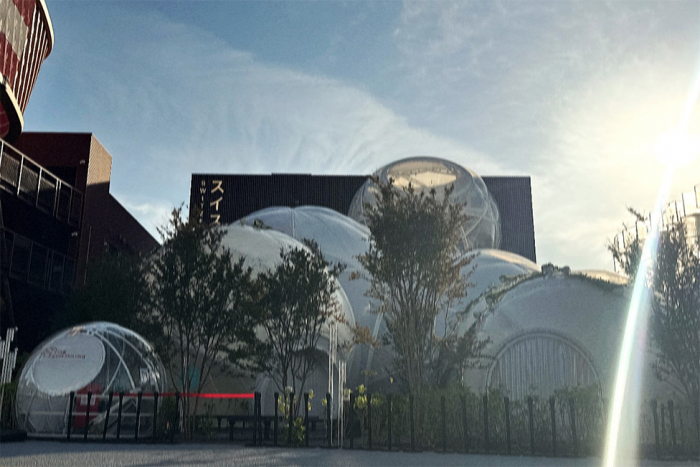
The Swiss Pavilion at the 2025 Expo.
Talks on the cutting edge of space exploration
The event kicked off with a session of short talks by researchers from both Switzerland and Japan.
~ Switzerland and Japan, space cooperation beyond borders ~
Dr Martin Rubin had arrived in Japan from the University of Bern in Switzerland. He spoke on the importance of international collaboration in the joint missions with JAXA, and talked about the history and future of Swiss space exploration. Do you know what the Swiss sometimes call the Swiss Moon flag? It is an experiment resembling a flag that was developed by the University of Bern and conducted on the lunar surface by Apollo 1969. A new adventure will the "Comet Interceptor" mission, which involves researchers both in Switzerland and Japan.
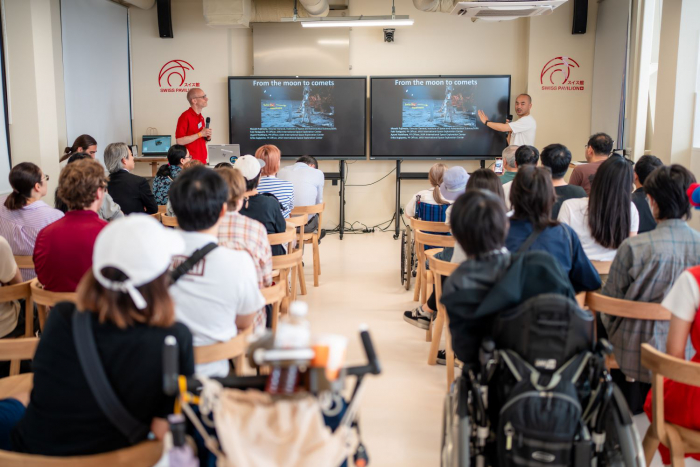
Participants listen intently to the talk by Dr Martin Rubin, Principal Investigator of the MANiaC mass spectrometer instrument that will fly on Comet Interceptor.
Up next was Professor Kawakita Hideyo from Kyoto Sangyo University, who delved further into the Comet Interceptor mission, explaining about the basic structure and formation of comets, and the unique mission plan to visit a long-period comet by lying in wait in space after launch until one of these rapidly moving objects appears.
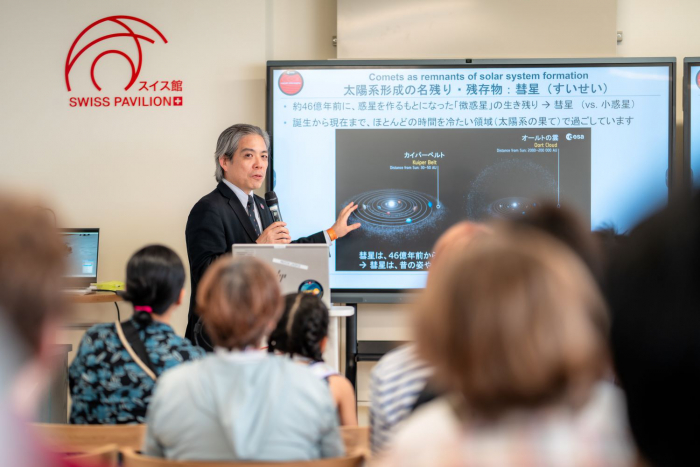
Professor Kawakita Hideyo, Science Lead of Comet Interceptor, Kyoto Sangyo University, Faculty of Science, Department of Astrophysics and Astrospheric Sciences.
ISAS Director General Fujimoto Masaki discussed international collaborative missions between ESA and JAXA, and how this led to the development of the Comet Interceptor mission. He also talked about the importance of Comet Interceptor and other small body missions to JAXA's Planetary Defense team; a serious topic but with jokes that brought laughter to the audience.

ISAS Director General Fujimoto Masaki also highlighted the SLIM lunar mission.
The talks lasted about 30 minutes, after which it was time for the participants to try their hands at the workshop designed to deepen understanding of comets, and JAXA's planetary exploration plans.
Can you make a comet? A workshop for creating, touching and exploring
This workshop was about creating your own comet. Using dry ice, water, dirt and even soy sauce (organics), participants found out about the structure of comets while bombarding a comet researcher with any and all questions.
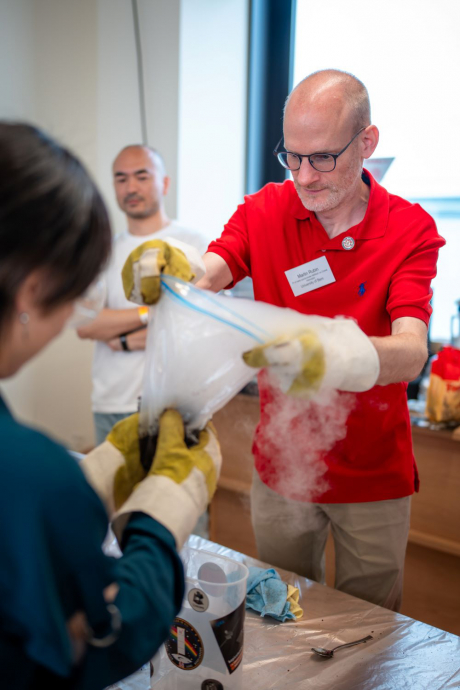
Dr Martin Rubin himself demonstrated how to make a comet.
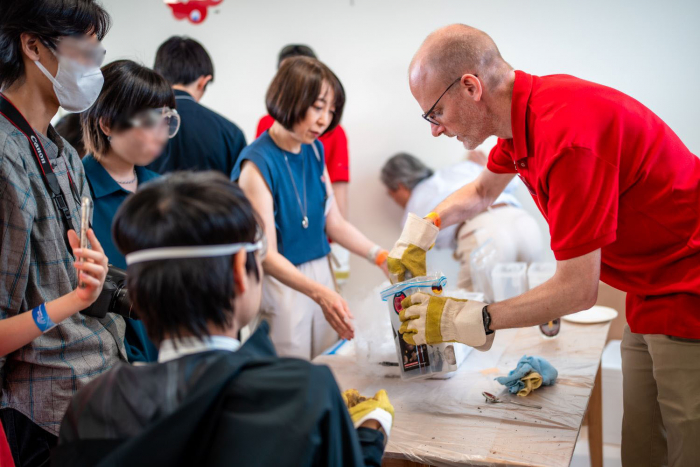
The participants listened intently to Dr Martin Rubin's careful instructions.
Explore the Moon in VR, and practice your rover driving skills with SORA-Q!
It was then time to take a walk, or drive, on the Moon! Both children and adults were fascinated by the tiny lunar rover, SORA-Q, which was a replica of the rover deployed by the JAXA SLIM lunar lander when it reached the Moon's surface last year. Using the app, teams took turns to transform SORA-Q from a sphere to rover, and drive over the "Moon" to find the SLIM spacecraft.
Over at the final workshop station, there was the chance to walk on the Moon yourself using virtual reality. During this immersive experience, one participant commented, "I feel just like an astronaut!".

Piloting SORA-Q! The mission was to drive the rover across the Moon, avoid obstacles, and photograph the SLIM lander.
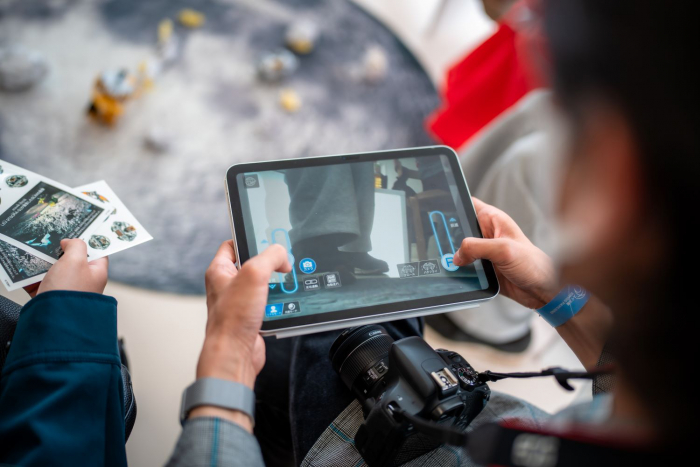
While the real SORA-Q operated autonomously, this SORA-Q could be driven with a tablet.
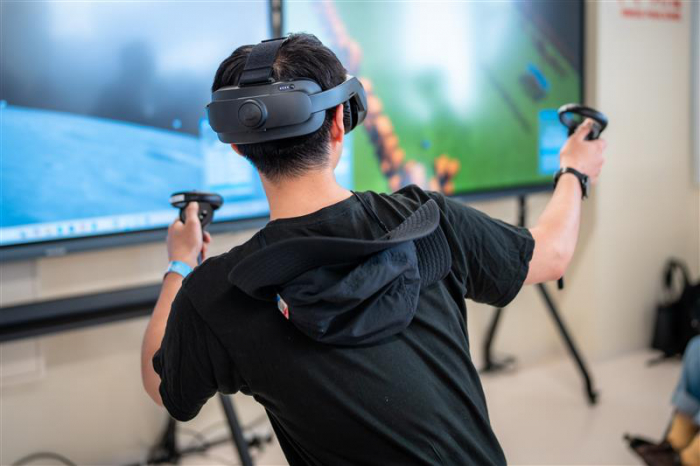
Experiencing the lunar surface in VR. The SLIM lander is now right in front of them on the Moon.
During the 90 minute event, participants took full advantage to hear directly from our researchers, asking a lively array of questions to bring the science to life.
It was amazing for us to hear comments such as "it was inspiring to hear directly from the researchers", and "SORA-Q is so cute and fun to operate"! It was a day when many visitors, from adults to children, could see themselves as researchers and take a step closer to space.
(2025/06/27)

